Ribeye Cap Steak: The Best of the Best, Cooked Just Right
If the ribeye is, as some say, the king of steaks, then the ribeye cap is the jewel in its crown. This is not a common cut of meat to find, but if you are lucky enough to find a ribeye cap (sometimes called rib cap or even by the Latin spinalis dorsi) at your local grocery or meat store, do not hesitate—buy it! In our considered opinion, it ranks as perhaps the greatest cut of meat on the whole cow, boasting an unmatched balance of tenderness, flavor, and ease of cooking. Read on to learn more about this amazing cut and how to cook it properly. Here’s a hint: if you’ve ever cooked a steak with a Thermapen® ONE, you’ve pretty much got it down already!
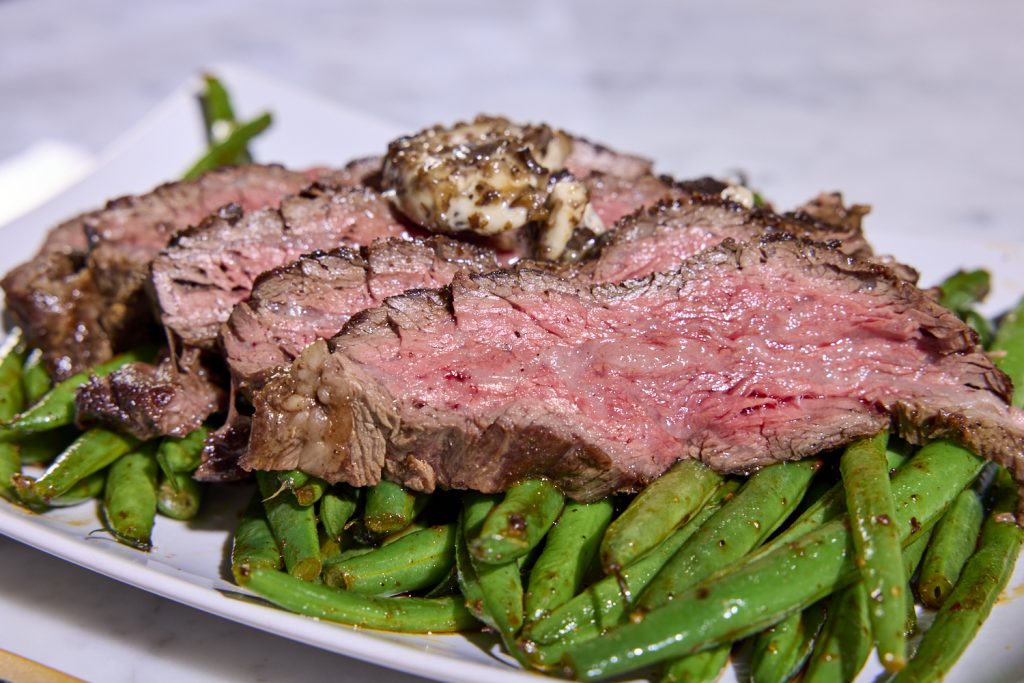
Contents:
Shop now for products used to cook this:
What is ribeye cap? And what about ribeye cap steak?
The rib cap is the glorious outer-rim of the prime rib roast. It is, to many minds, the best corner of a traditional ribeye steak on the plate—that loose part on the other side of the strip of fat that runs through the middle of each ribeye steak. But removed from the rest of the rib loin entirely and cooked as its own self-sufficient cut, the rib cap becomes something altogether extraordinary.
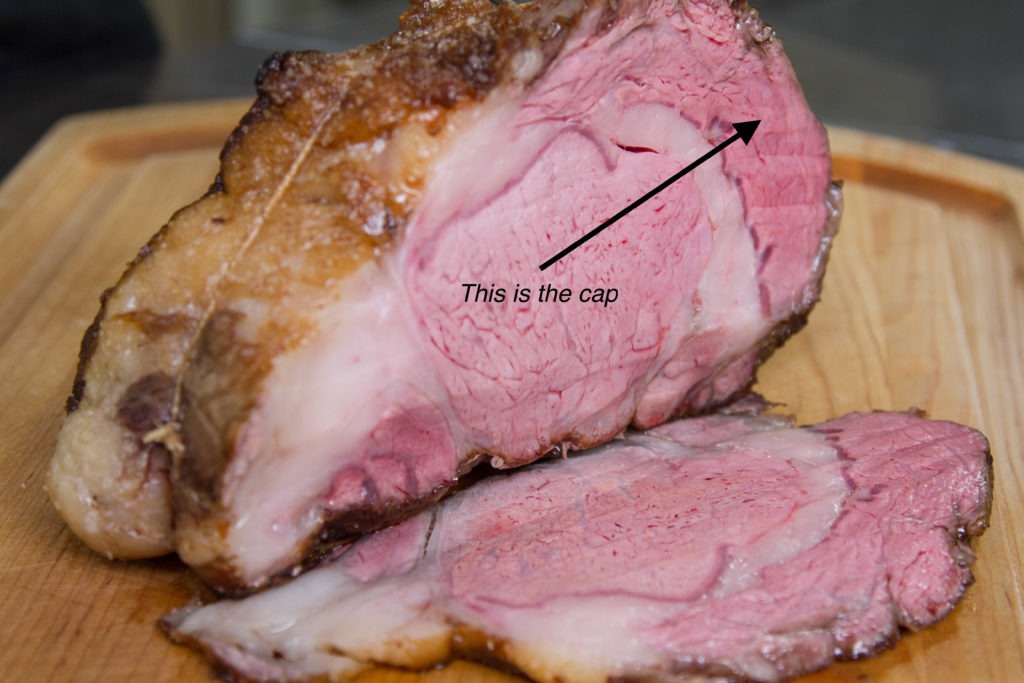
The meat of the cap is, well, loose. Spongy, almost. It has layers of muscle fibers that are bound together with almost no connective tissue. The cut is shot-through with marbling fat that melts like butter when cooked, and it’s not just any fat, either. It’s rib eye fat. If you’re a beef lover, you know already that every muscle tastes differently and that fat from every part of the cow has its own unique flavor and texture. And you know that seared ribeye fat is among the best smelling and best tasting.
Ribeye cap steak takes on two forms: flats and pinwheels. If you cut the cap off of your rib roast and cook it as is, it closely resembles a flank steak. This is a flat. But when you buy ribeye cap steaks at a butcher, you’re likely to get pinwheels. To make the pinwheels, the butcher rolls the flat cap up, ties it into sections, and cuts those sections into steaks. The result is a rolled steak held together with butcher twine. Either of these options is great, but here we’re going to cook the flat.
How to butcher a ribeye cap steak
As I mentioned above, the spinalis dorsi is not a common muscle. I hear tell of it being sold at giant-box wholesale stores from time to time, and you can certainly buy them from specialty retailers online. If you have a very good local butcher’s shop, you can most likely get one there. But otherwise, if you want a ribeye cap, you’re going to have to make one yourself.
Yes, this is an opportunity for some light home butchery, so sharpen up your boning knife and check out the video below. It’s really quite simple, once you get past the first stages. At a certain point, you can even set the knife down and let your fingers do the work.
- First, remove a few steaks from the loin-end—the end that looks more like a NY strip. At this end the cap is too thin to use, so cutting off a few steaks for later use will get you to the part of the cap that is thick enough—at least a solid half inch. Enjoy these steaks at your leisure.
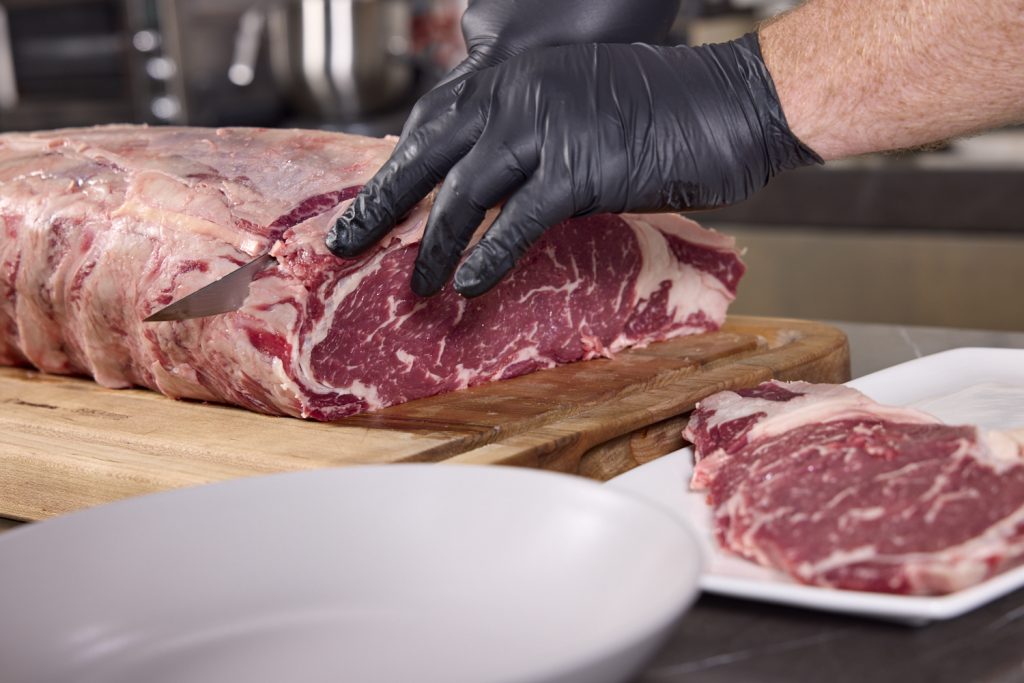
- Trim off the lip of the loin.
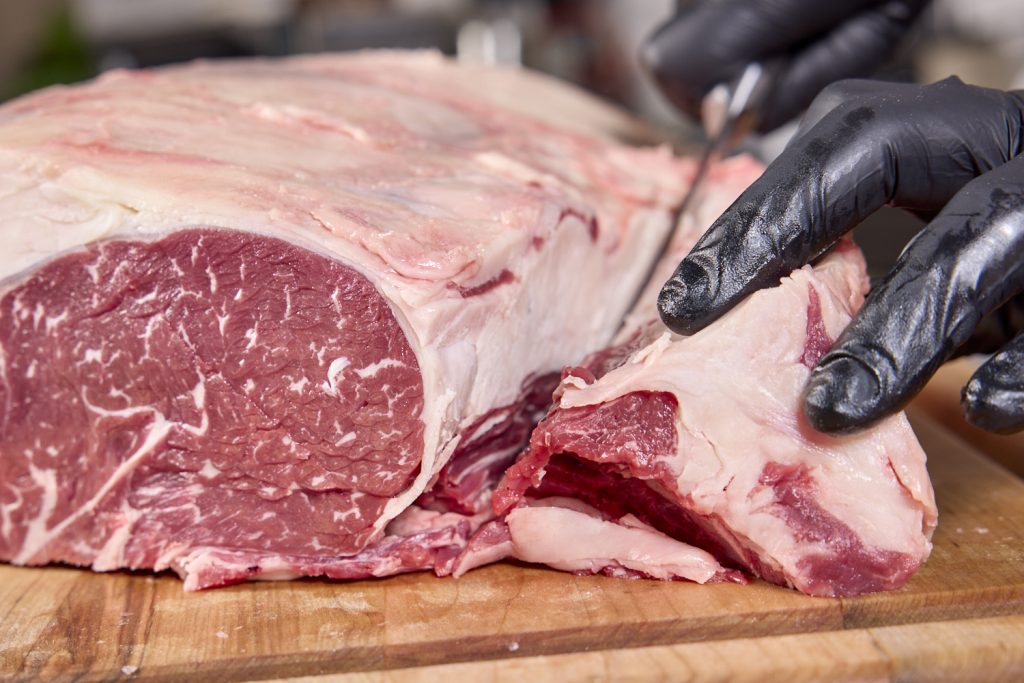
- Trim away any excess fat and silver skin from the surface of the cut to make trimming the cap easier later.
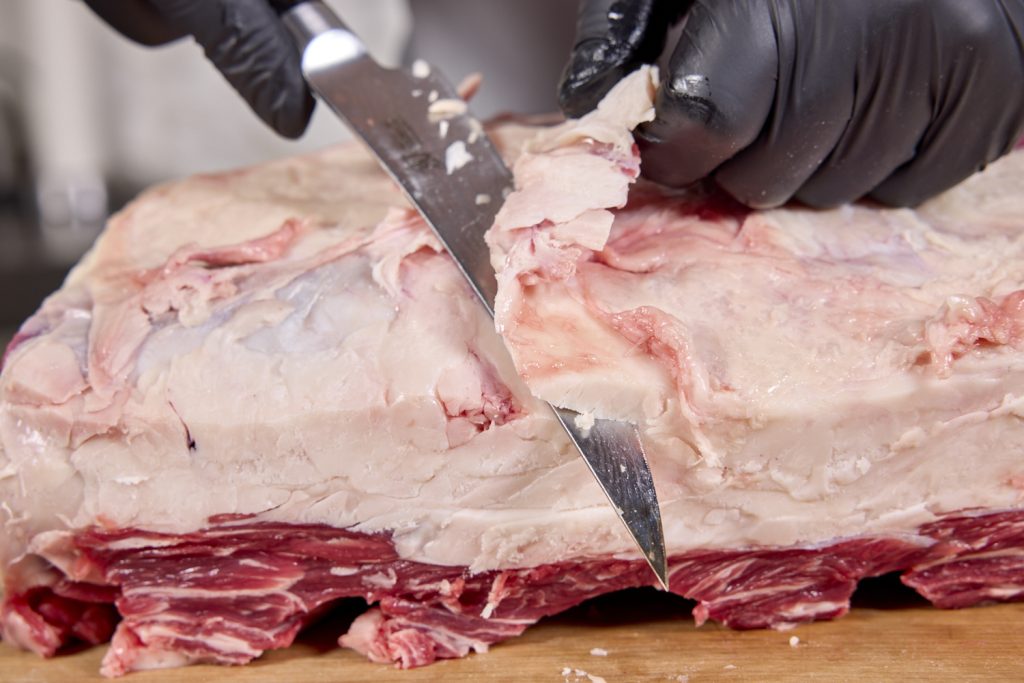
- Turn the rib loin over and remove the intercostal muscles (the between-the-rib meat).
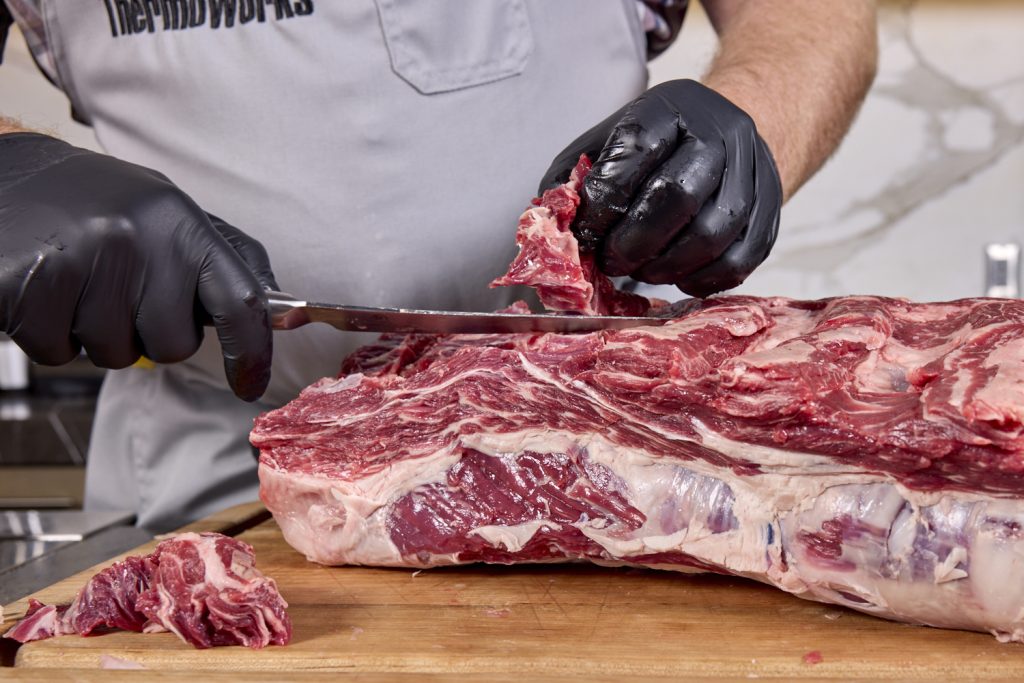
- Find the seam on the rib-side where the cap runs parallel to the length of the rib. Rip it open, trimming out any portions you can’t easily tear with your hands. Note that this step is an extremely satisfying part of the process.
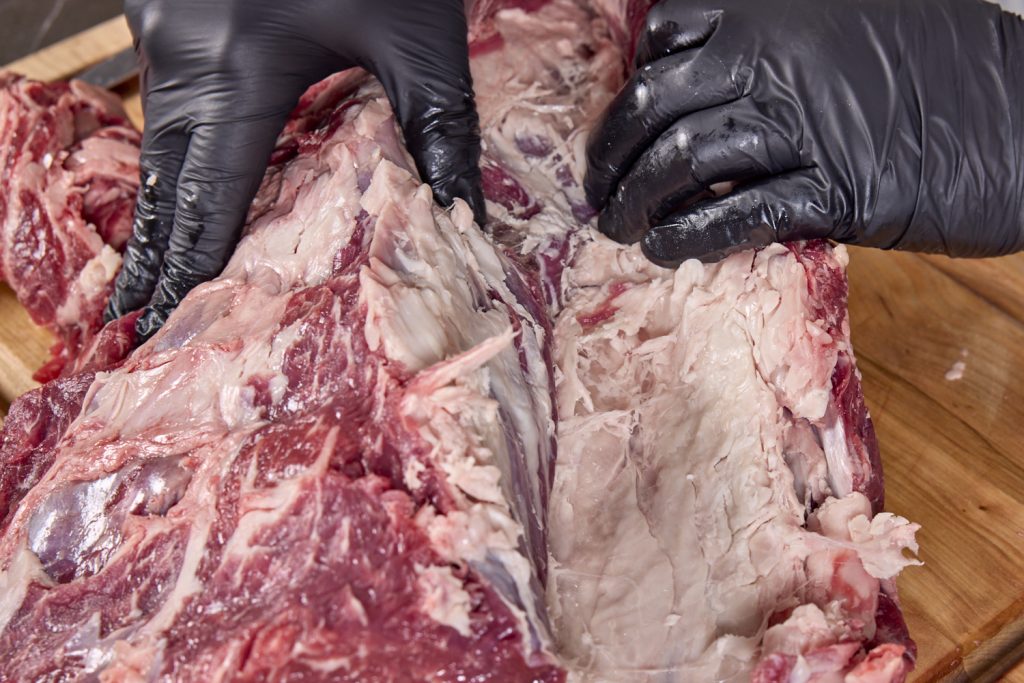
- If you like, you can cut the center—the eye—of the rib loin into steaks. These are called rib filets. Or you can wrap it up and use it later for a roast.
- Trim the rib cap of any excess fat and silver skin.
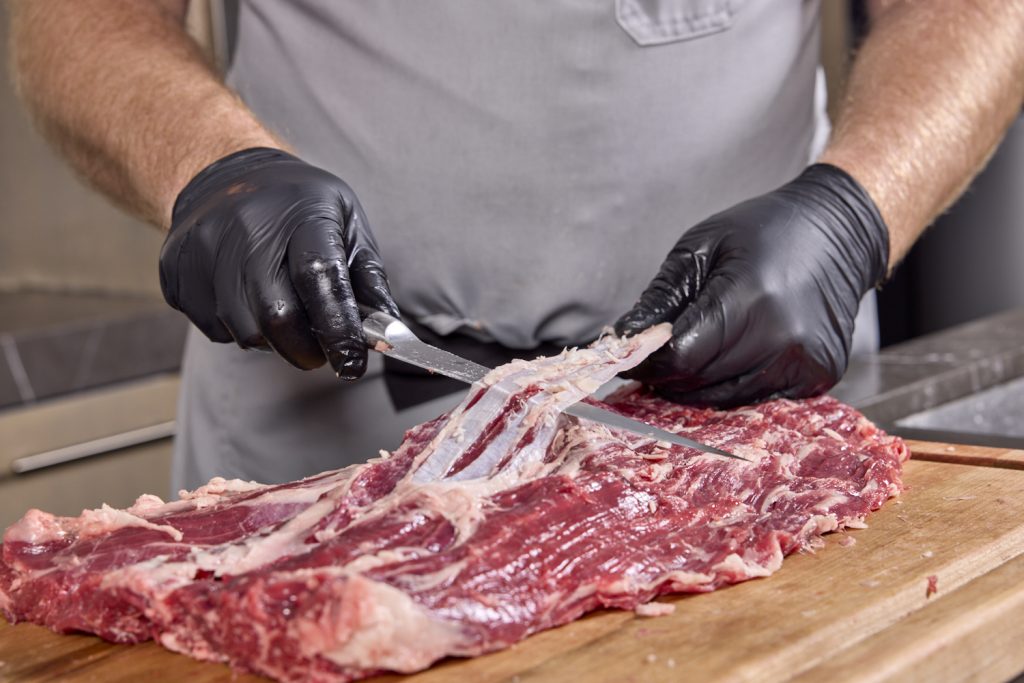
Note: one end of the cap may be a good deal thicker than the other. You can either cut the cap into pieces of even thickness for even cooking, or you can cook the thinner side to medium-rare, leaving the thicker side rare (adjust up the scale as your guests require).
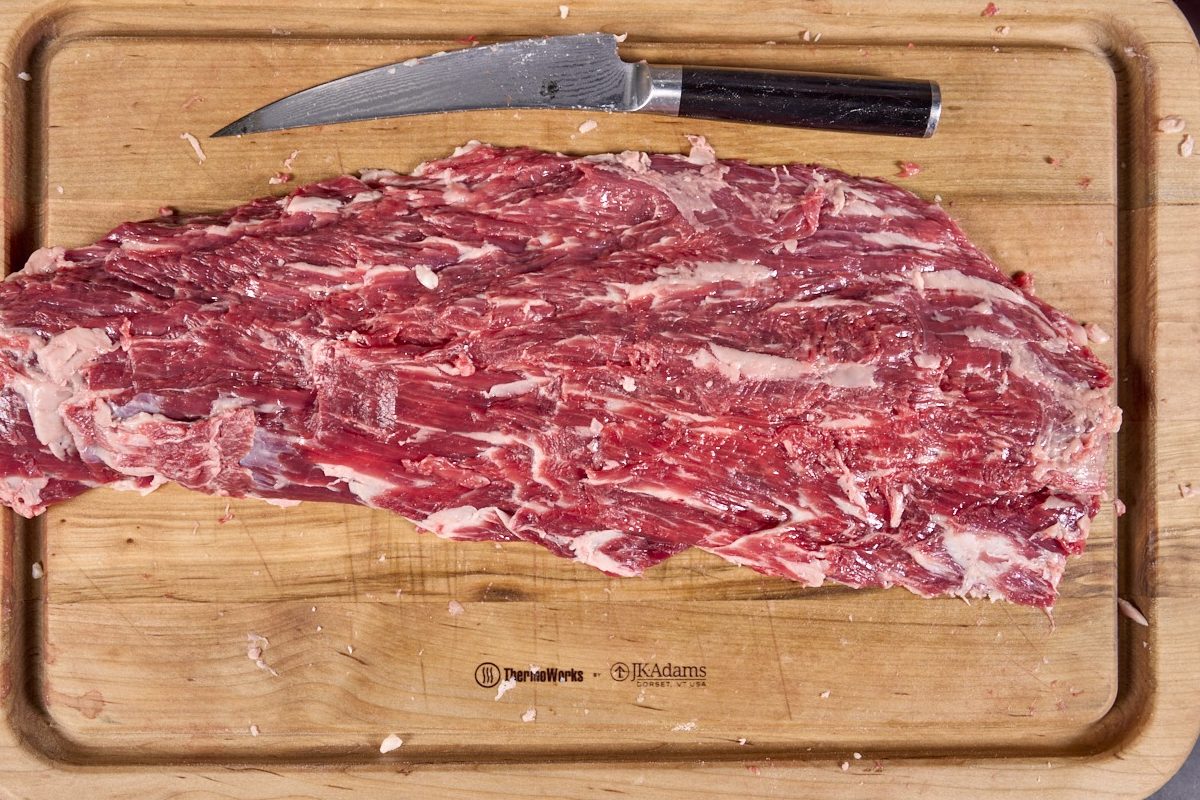
Searing a rib cap
Rib cap, as with all steaks, is best when given a hard sear. You can do this on a grill, of course, but we prefer it in a cast iron pan or on a good sturdy flat top griddle. Get the surface up over 375°F (191°C)—you can use an IR thermometer to make sure the temp is high enough—before putting the steaks on to cook. Then it’s a matter of flipping and searing. Flip the steak about every 90 seconds (use an Extra Big and Loud Timer to track it) and start to temp it with a Thermapen ONE after a few flips. It’s a thick steak so it will take a little while, but using an instant read like Thermapen ONE is essential here, as this very loose piece of meat will not “feel” done with the finger test.
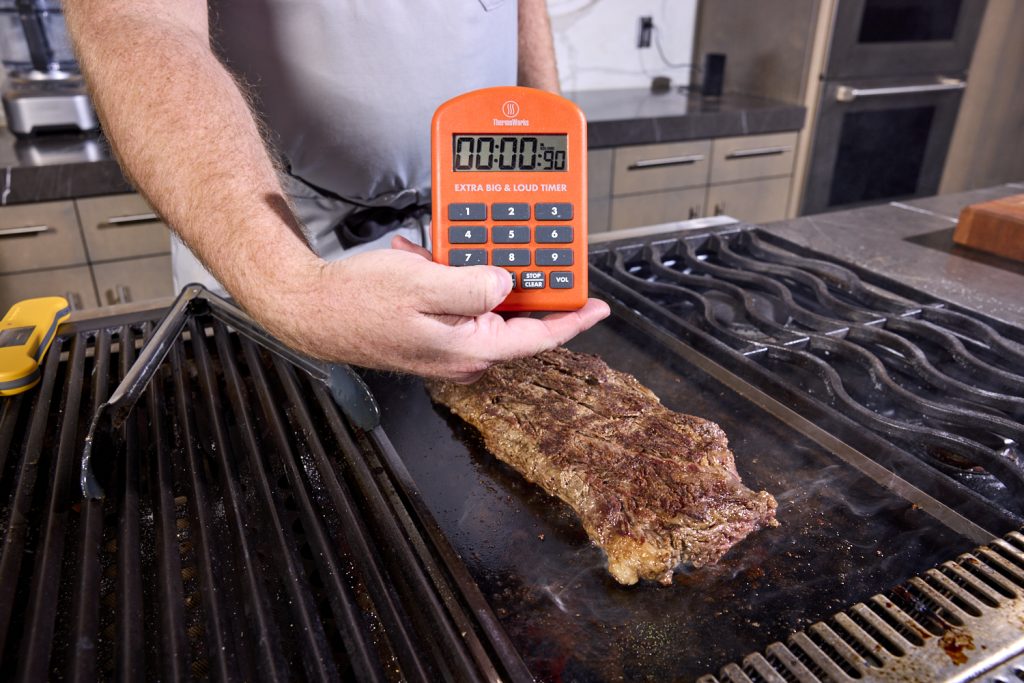
For medium rare steak, pull it from heat when you see no temperatures lower than 125°F (52°C). For Medium steak, pull it at 130°F (54°C).
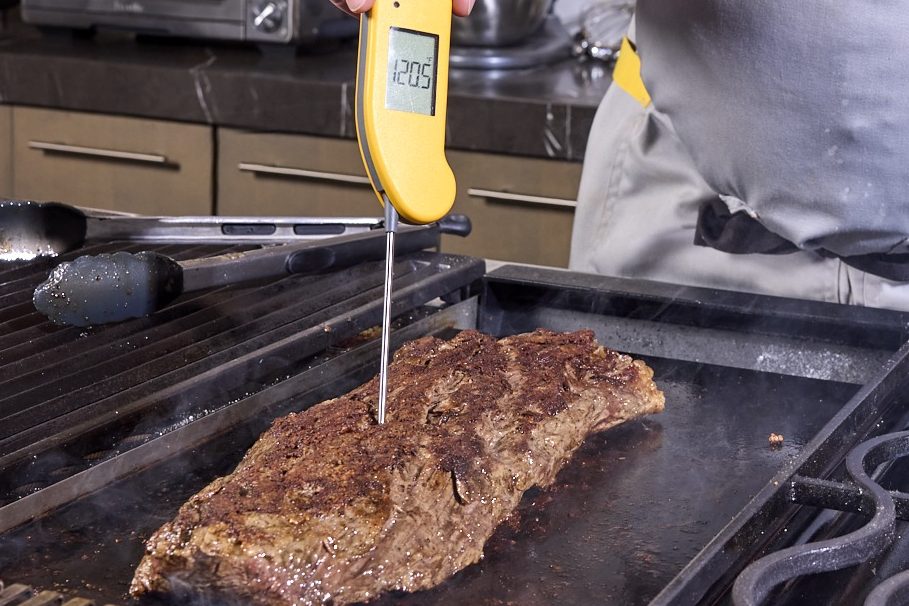
Conclusion
The ribeye cap is an incredible cut. It is not an exaggeration to say that the whole team here now lists it in their top beef rankings. And here’s the thing: we think you should eat this every time you buy a prime rib. If you serve the trimmed out eye-loin as a roast, you expand the prime rib’s utility. It is something I will absolutely take advantage of, and we think you will too, once you try it out
So grab a knife and a rib loin, a skillet and a Thermapen ONE and try out what may well be the best piece of beef there is.
Print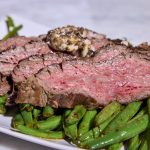
Ribeye Cap Steak recipe
Description
Steak cooking instructions based on those by Jess Pryles in her recipe Grilled Ribeye Cap w. Caramelized Onion Butter & Truffle Salt
You can go to her site for the oinion butter and truffle salt recipes, or you can use any compound butter you like.
Ingredients
- 1 rib cap, butchered out and trimmed to your liking
- Kosher salt and fresh-ground pepper, to taste
- 2–3 Tbsp butter
Instructions
- Prepare the beef.
- Heat a grill or cast-iron skillet or flat-top on high heat.
- Season the ribeye cap with salt and pepper.
- When the surface is hot, oil it with the butter.
- Place the rib cap on the cooking surface and sear
- Cook, turning every 1-2 minutes
- After a few turns, start to temp your steak with your Thermapen ONE inserted into the steak reads no lower than 125°F (52°C) for medium rare, or 130°F (54°C) for medium.
- Remove the ribeye cap from heat and let it rest for a few minutes. Slice across the grain and serve with compound butter.


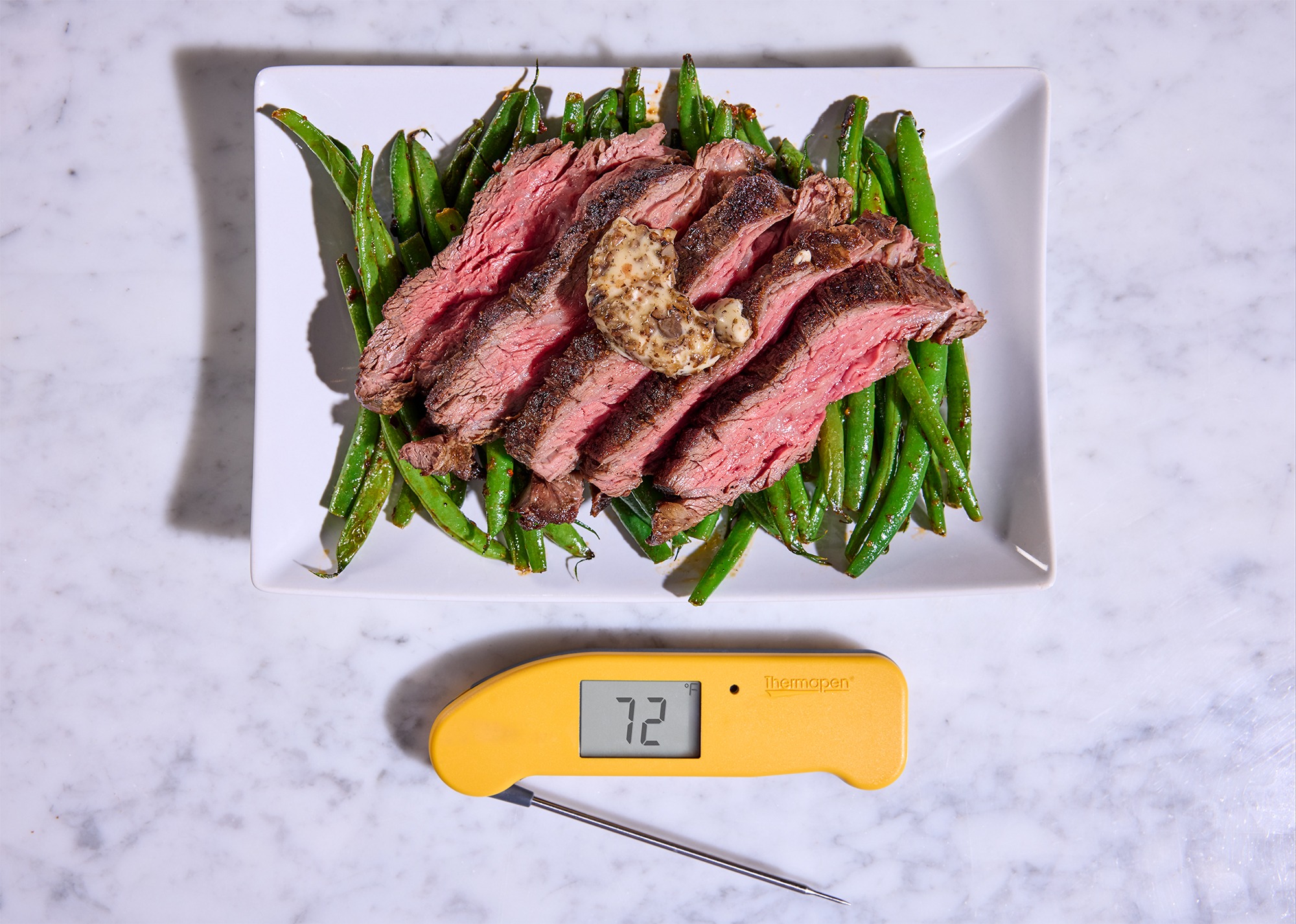
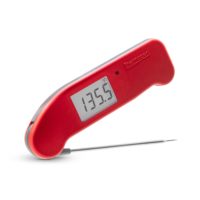


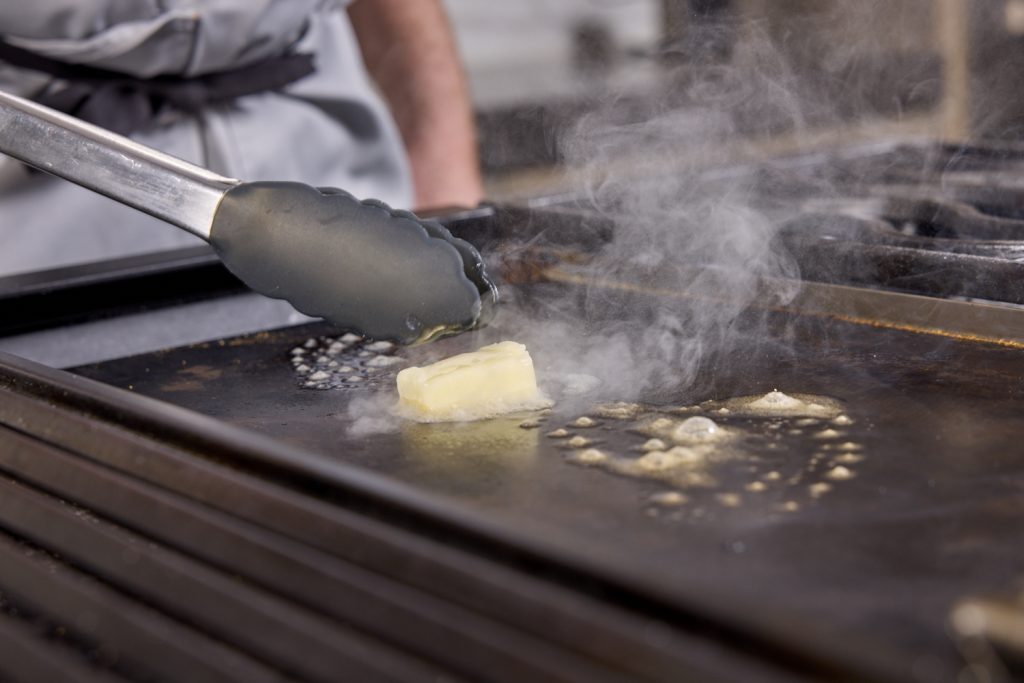
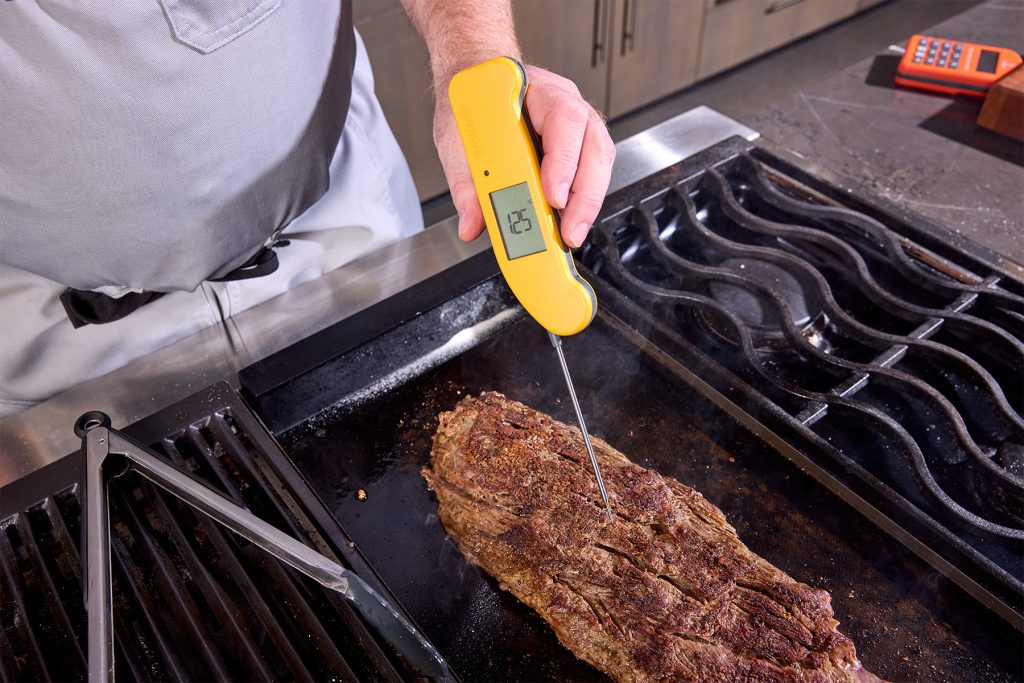
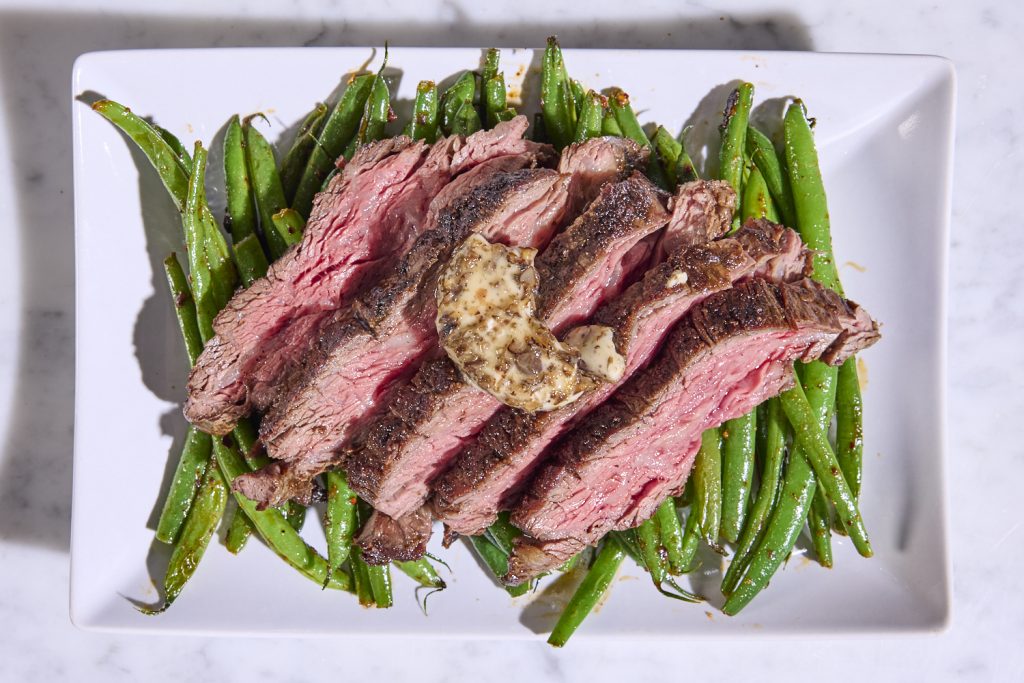
All I can say is, my mind is mentally drooling; & my mouth is watering! I’ve got to try this!
Can’t wait to give this a try.
Can’t wait to try this. Glad I’m on your email address list! You have really good recipes. Thanks!
I love to roll up the trimmed cap and cut them into 4-6 ounce “cap-filets”. Wrap them with a bacon strip and tie with butchers twine. This is simply the most delicious cut of beef there is, IMHO.
James,
Ummm…YUM! Now that’s on my list of things to try out!
I’ve had a thermopen for 10 or 12 years and I couldn’t do without it.You like to cook especially on the grill get a thermopen,indispensible.
This was the best recipe and video of any you have shown. I will share my new found knowledge with my hard core meat eaters. Old dog new tricks @72
I always check for my picture as a winner but I know I never sent it in. How do I do it.
John,
If you’ve subscribed to our emails then you have entered to win. If you ever do, we will contact you with a request for your picture. I’m glad you liked the post and I hope you try it out and let us know how it goes!
I get my caps of ribeye from Snake River Farms in Idaho. It absolutely is the best cut of beef. Even better when you grill the thickest part to 110; the thinner will be 120. Cover with aluminum foil to rest for 10 minutes. It will be a perfect 115 for your rare meat lovers and the thinner sections will be a perfect 125 for your medium rare meat lovers.
The Thermapen MK4 is perfect for getting this right.
Michael,
Yes!
What cut of meat do you buy to do this?
Bob,
Buy a whole rib loin—boneless is best—and butcher it out yourself. Or, if you can find it, buy rib cap, ribeye cap, or Spinalis Dorsi. They are all the same thing.
I very greatly appreciate your how to segments. I have a Mark IV, Dot, and Thermo-Pop. Thank you for maintaining the quality of your products….to those for whom only the “best” will do. Denny
Not only are the products superb quality and nice to look at, so is the exquisite packaging. I’m a graphic designer and package designer. The Thermoworks graphics (including the website) is stellar.
In my kitchen we trim off the cap and sell an amazing steak frites for more money than you think folks would pay…it’s that good. We cook off the rest of the roast and shave it for prime rib dips, someplace that my thievery will go unnoticed. By the way, I really want to buy a new MK4 but my 10 year old ThermaPen just won’t quit working!!
Tim,
That’s Fantastic! I want to eat that steak frites…
Maybe if you let your linecooks use the Classic more, you can get an Mk4 sooner?
I had my first rib cap at the Ramsey Steak in Las Vegas a few years ago. We had to ask what it was, and then ordered it as an appetizer to share to see what the waiter was bragging about.
Wow, what a great experience!
Now the only place I can find it is at my local CostCo. Every visit adds one complete rib cap to the basket and makes for great grilling, of course the Mk4 is always at the grill – we like the Mk4 so much we recently bought a second one for use in the house when the other is at the grill!
I was at Wild Forks in Fort Lauderdale looming to buy some steaks for my hosts and when checking out the lovely cashier tells me I should put those steaks back and buy ribeye caps.
I had no idea what they were and she takes me to the case and says right here….. this what I’m having for dinner.
Took them to my friend’s house and as per her recommendation a little coarse salt, five Minton each side and it was no doubt the best steak we ever had !!! Trouble is I can’t seem to find it in NJ but the search continues. Do not pass this up if you come across it!!!
Fred,
That’s great! I’m glad you liked them as much as we did!
I love ribeye caps, too. One question regarding food safety: At my local Costco the butcher removes the caps from two ribeye steaks, rolls the caps together into a spiral, and ties the resulting “spiral steak” together with twine. This is the only way that my Costco sells ribeye caps. They sell the two caps rolled together, and separately they sell each of the two original ribeye steaks without their caps. And they don’t cut any of their meat to order.
My question is this. Rolling the two caps into a spiral means that some of what had been the outer surface of the original ribeye steaks, where germs can reside, is now tucked inside the new spiral steak. If I cook this to medium rare, am I killing the surface bacteria that are now on the inside of the spiral steak? I considered removing the twine and separating the two caps, but that makes each of them kind of small and hard to get a good sear without overcooking the interior. Any thoughts?
Rex,
That’s good thermal thinking! Yes, it is technically mixing the more bacteria-laden outside with the inside. It is not as mixed as in ground beef, obviously, but if you are worried about contamination, then it is an issue.
Though they don’t do custom cutting when you are there, will they do a custom cut if you call ahead?
As for laying them out flat, I personally really like that option. If you have a good hot pan, a very fast sear can give you delicious browning while still leaving the interior nice and medium rare. I did that just this weekend with a tiny piece of prime steak that was less than a half inch thick. Seared very fast, a thin steak can turn out delicious. If you are concerned about contamination, unfurling them and cooking them separately can certainly work.
Happy cooking!
My grandfather was in the cattle/meat business for most of his life. I can’t remember what he called it, but watching your video reminds me of what he always said was the best of the best when it came to beef. That was the part that always went home with him. He used to give it to my mother from time to time, and it was a superb treat. I’ve never seen the cap sold by itself, but I sometimes see whole ribs sold. Most people have the butcher break it down into either steaks or a roast, but the cap seems to always disappear as “waste” before being wrapped. All it takes is a very sharp boning knife and a little time. Your video is a great starting point for do-it-yourselfers with a little time and a sharp boning knife. A meat grinder for the scrapes is also very useful.
my fav cut of beef as well! i’ve always done it as a coil on the grill but now i’ll try it flat just to see!
Yes, do Rose! Thanks for the comment, always good to hear from you!
Is this not the same cut that is called Picanha in Brazil? Very popular there, and I agree it is the ultimate cut from the cow.
The picanha is the sirloin cap, not the rib cap, and it IS very tasty!
Well you let the secret out. That has always been my wife’s favorite part of the ribeye. Now that’s the only steak I can cook. 👍
Them ono grinds, brothers and sisters